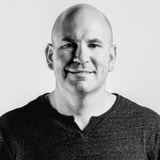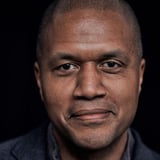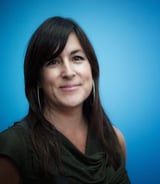Summary
When Rachel pivoted from content design to design operations, it turned out that she had a different understanding of what this meant than her VP, who envisioned a conventional program manager. Rachel brought a very different perspective and set of skills to the role — which was a learning experience for both of them. In becoming involved with the various design ops communities, and later, when she was interviewing to hire three new team members, Rachel was fascinated by the variety of backgrounds of people both already practicing and looking to enter the field. Some are more like what her VP expected, focused on milestone planning and tracking, resource allocation and budgeting. Others design and implement processes and manage shared toolsets. Some serve as chiefs of staff (which can also mean many different things). Some plan and host team meetings, ceremonies, and retreats. Others focus on research ops. And many — especially teams of one — do a little bit of everything. More and more leaders are beginning to understand the value of design operations — but some think the function should look or behave a certain way. DesignOps pros, though, know that every team and organization is different, and the only way they and their teams can succeed is by tailoring their approach to address those specific needs. This facilitated conversation will explore what brings people to DesignOps, how their backgrounds inform their practice, and how design ops practitioners can give themselves the permission and fuel they need to make this argument and structure things the way they believe will have the most impact.
Key Insights
-
•
Design operations professionals come from varied and unconventional backgrounds, including architecture, education, communications, and TV production.
-
•
Transferable skills like communication, stakeholder management, and strategic thinking are critical in design ops roles.
-
•
Listening tours and one-on-ones are essential for understanding team needs, priorities, and pain points before proposing solutions.
-
•
Imposter syndrome is a common challenge but can be reframed as discovering unique superpowers and strengths.
-
•
Hiring diverse candidates with non-traditional paths strengthens design ops teams by bringing fresh perspectives.
-
•
Quick wins help demonstrate design ops value and build momentum for larger initiatives and resources.
-
•
Building deep empathy and curiosity within design ops teams leads to better understanding of user and team needs.
-
•
System thinkers, service designers, and program managers who enjoy designing processes are valuable hires in design ops.
-
•
Many design ops practitioners have been doing the work before ‘design ops’ was formally recognized.
-
•
Tracking designers’ operational workload can be effective to justify expanding design ops staffing to leadership.
Notable Quotes
"Relationships are a currency and if you have strong connections, you’ll be rich in your career."
"I dreamed about work every night for a year and over time learned the vocabulary through questions from my team and design Ops community."
"Imposter syndrome turned out to be my superpower by giving me curiosity and asking lots of questions."
"Stick to quick wins to show value and have a communication plan around them to get buy-in for design ops work."
"One of me is enough on every team; I look for candidates with complementary skills to mine."
"Design Ops folks often do the job before the title existed, figuring out tools, training, and best practices on the fly."
"Hire people who are relentlessly seeking improvement and inspire others to do the same."
"The biggest challenge is prioritization and saying no to avoid trying to do it all and failing spectacularly."
"Ask designers to track operational work so you can show leadership the overhead and need for design ops support."
"To get buy-in for staff capacity, show a roadmap with priorities and what can be done with current resources."
Or choose a question:
















More Videos

"You need strong regional players with negotiation skills to navigate the split loyalties in global teams."
Adam Cutler Karen Pascoe Ian Swinson Susan WorthmanDiscussion
June 8, 2016

"We don’t get upset when users say one thing and do another, but we freak out when our leadership behaves that way."
Peter MerholzThe Trials and Tribulations of Directors of UX (Videoconference)
July 13, 2023

"Everything that has been put online, someone like us made and put there; we bake our own biases into it."
Lisa WelchmanCleaning Up Our Mess: Digital Governance for Designers
June 14, 2018

"The solutions are out there; we just need the will to implement them."
Vincent BrathwaiteOpener: Past, Present, and Future—Closing the Racial Divide in Design Teams
October 22, 2020

"If you get a perfect score on your OKRs, it means you didn’t set your sights high enough."
Brenna FallonLearning Over Outcomes
October 24, 2019

"Factory owners manipulated people’s time so much that workers were afraid to carry a watch."
Tricia WangSpatial Collapse: Designing for Emergent Culture
January 8, 2024

"Diverging and converging around the business model canvas helped us test and prototype delivery methods for the value propositions."
Edgar Anzaldua MorenoUsing Research to Determine Unique Value Proposition
March 11, 2021
"We manage the environment in which knowledge distribution takes place, not the process itself."
Designing Systems at Scale
November 7, 2018

"If my experiment made front-page news tomorrow, what would the headline be? Would my mother be proud?"
Erin WeigelGet Your Whole Team Testing to Design for Impact
July 24, 2024


















